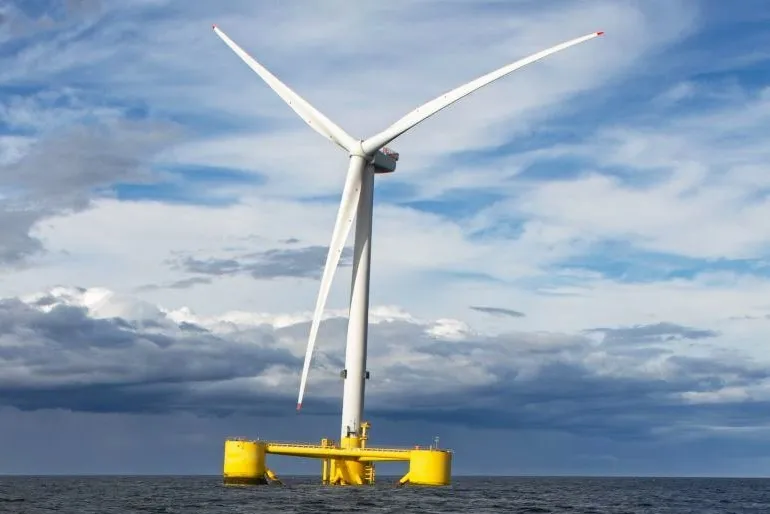UK floating wind pioneer takes knock as it is shunned by Chinese oil giant
Green Volt became the first commercial scale floating offshore wind project to win a UK Contract for Difference (CfD) last year, but faces challenges

The landmark Green Volt floating wind project under development off the coast of Scotland has suffered a major setback after Chinese company CNOOC decided not to go ahead with an electrification project for production systems on the Buzzard oil platform in the North Sea.
The decision raises questions about the commercial viability of a raft of floating offshore wind projects that obtained leases under Crown Estate Scotland's Innovation and Targeted Oil & Gas. (INTOG) offshore wind tender, which was partly aimed at decarbonising oil and gas installations in the North Sea.
INTOG forms part of the broader North Sea Transition Deal, from 2021, which aims to halve emissions from oil and gas assets by 50% by 2030.
“We are actively pursuing justifiable options to decarbonise the platform and remain committed to delivering on the North Sea Transition Deal emissions reduction targets.”
From gas to wind
Energy consumed on offshore oil and gas facilities in the UK is usually generated by gas-fired turbines.
Emissions have fallen with the move away from diesel powered generators and some use of combined cycle gas turbine sets.
The INTOG scheme aims to take this further by creating commercial opportunities for decarbonisation by developing synergies with offshore wind turbines and providing oil platforms with clean energy.
Green Volt, which is being developed by Edinburgh-based Flotation Energy and Norway’s Vargronn, won seabed rights for its 560MW array off Scotland in the 2022 INTOG lease round.
Then, last year, Green Volt won a Contract for Difference (CfD) in the UK’s AR6 allocation round, placing 400MW of capacity at a strike price of £139.93/MWh.
The location and size of the Buzzard platform made it a strong fit for the Green Volt wind farm, so the CNOOC announcement came as a blow to its backers. The developers shrugged off the decision, however, citing the North Sea Transition Deal as a continuing driver.
“Green Volt is on track to be developed as the largest commercial-scale, floating offshore wind farm in the world, providing clean power to thousands of homes across the UK,” the joint venture partners said in a statement.
“Despite the economic challenges facing oil and gas operators in the UKCS, we remain in active commercial discussions with potential partners regarding the electrification of their platforms.”
Green Volt said its floating wind project can unlock £2.5bn ($3.4bn) of private investment and create up to 2,800 jobs.
Jordan May, a senior analyst with market intelligence and advisory firm TGS | 4C Offshore noted that the Buzzard project would only have accounted for 70MW of Green Volt’s capacity and suggested that there is hope for the project, amid evidence that of “ongoing talks" in relation to another oil platform.
But he also sounded a warning. “There are other oil fields nearby, but if the issues stem from the incompatibility between intermittent power and generators on a platform, then finding another platform and partner could be nearly impossible,” May posted on LinkedIn.
Oil and gas operators in the North Sea have been pressing for relief from a windfall tax introduced when energy prices soared in the wake of Russia’s invasion of Ukraine in 2022.
The North Sea is in a steepening decline as an oil and gas province, with the downward curve on Buzzard illustrating this trend.
Oil production on the field fell below 30,000 barrels per day in June, compared with 185,000 bpd 10 years ago, according to the North Sea Transition Authority.
Crown Estate Scotland declined to comment on whether Green Volt has informed the seabed landlord of plans to connect with Buzzard, or any other oil platform.
"Market conditions, geopolitical landscape, changes in the UK Government and policy uncertainty have all been cited as contributory factors. However, wind farm developers remain positive they can secure the necessary oil and gas offtake arrangements to progress their projects."
(Copyright)